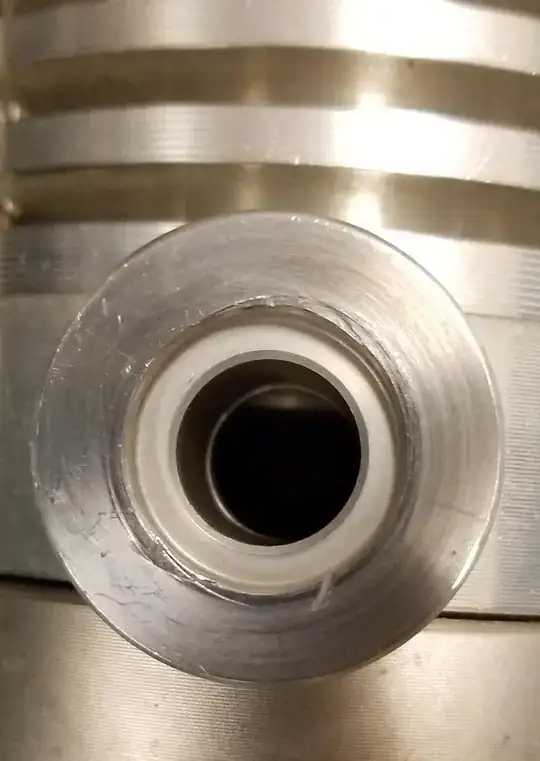Here is an interesting question for those who are familiar with vacuum science techniques. In the attached picture we have a damaged surface of a KF flange, which comes from the turbo pump outlet and connects to a roughing pump. We believe this is a source of major leak (our roughing pump or helium leak-checker can pump out a small 4-way cross efficiently, but the same 4-way cross attached to the turbo pump (inlet sealed) cannot be pumped down efficiently).
How would one fix a scratched flange surface like this? Tried putting some silicone vacuum grease but didn't fix the problem.
UPDATE (01/31/2019) : We tried the PTFE o-ring as suggested below, but it did not prevent the leak. My suspicion is that because the damage is on the inner diameter of the flange, the o-ring cannot simply fill in the gap resulting in the inner diameter (only the centering ring, not the o-ring, touches there I think).
UPDATE 2 (03/08/2019) : The turbopump was repaired by Duniway Stockroom. What they tell me is that the scratches were not to blame for the leak! What matters for the foreline flange is the presence of deep scratches that may connect to the outside, and in our case, no scratches were of this kind. The deep scratches that we had were closer toward the inner diameter. The actual culprit for the leak was that there was a crack in the joint between the foreline flange and the main body of the pump.
